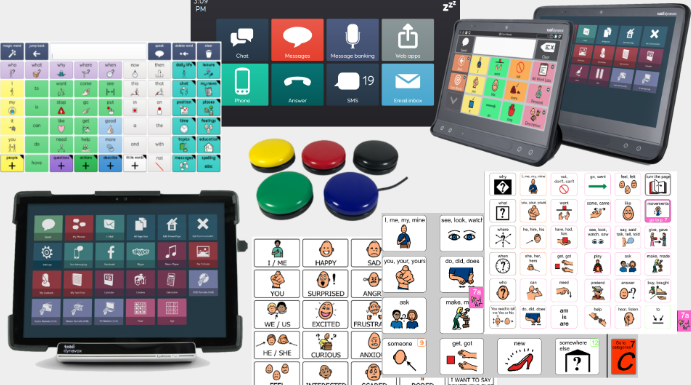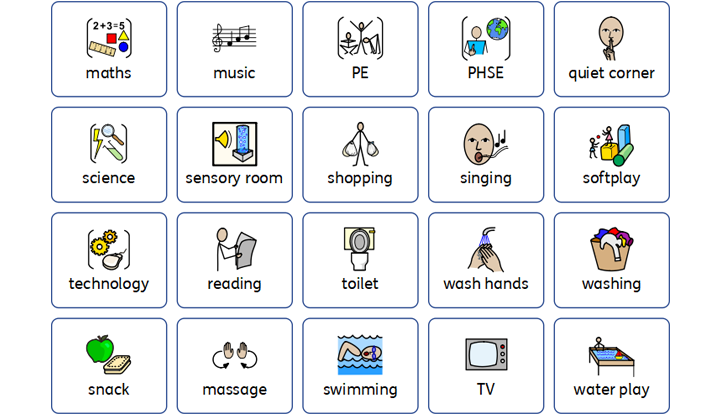Communication is Key
Communication is the key that unlocks learning, independence and student voice. We create opportunities to communication in a range of ways that suit our learners' abilities and styles.
Intensive Interaction 
Intensive Interaction is designed to support learners at the very earliest levels of development. Intensive Interaction focusses on early interaction with others to relate, to know, to understand and practice communication. This usually takes the form of a communication partner, i.e. an attentive adult, who mirrors the communication displayed by the pupil e.g. vocalisations, body language, eye movements, breathing rate etc.
Intensive Interaction teaches and develops the ‘Fundamentals of Communication’ through eye contact, facial expressions, vocalisations, turn taking with exchanges and the structure of conversation.
Objects of Reference
Objects of Reference is an approach that uses items to represent people, places, objects and activities alongside the spoken word. The objects can be in different forms, such as a whole object or part of an object. The objects should be relevant to the person and used consistently on every occasion. Objects of reference can also support receptive language and understanding, transition and signalling the beginning of a new activity, along with choice making.
Photographs
Photographs are used to provide an exact representation of a concrete object, person, activities, choices or a place supported by the spoken word. The photographs provide a visual approach to enhance understanding and expression, making choices, and locating places. Photographs can also be used in visual support strategies and timetables.
Makaton is a language programme which utilises signs and symbols to help people to access communication more effectively. It is designed to support spoken and receptive language and the signs and symbols are used with speech, in spoken word order. Makaton signs are highly visual, concrete and very iconic (at the early stages). This makes them more motivating for pupils to look at and sometimes easier to understand than spoken words alone. Makaton signing can help to develop attention and listening skills, as well as encourage engagement at all levels and social interaction too.
Check out our sub-page that lists our Makaton Words of the Week
Augmentative and Alternative Communication (AAC)

Augmentative and Alternative Communication, or AAC, is a term used to describe various methods of communication that can help people who are unable to use verbal speech to communicate. AAC methods vary and are personalised to meet each individual's needs and can include Low Tech methods such as eye pointing, photographs, symbol cards and communication books, as well as High Tech methods, which include more complex computer technology such as VOCAs (voice output communication aids) and eye gaze devices. Access to any AAC device can be through using hands, eye gaze, switches or switch scanning. There is no ‘best’ type of AAC system and the most suitable one for each individual will depend on their abilities, preferences and needs. The AAC device becomes their own ‘voice’ and will increase social and functional interaction and help to build confidence.
Symbols


There are many different symbol systems used throughout the world, and they all represent what you want to say in picture format. The chosen symbol system used at Fountaindale School is Wigit. The same symbols are used throughout the whole school, so the pupils never have to re-learn their communication system. These symbols can be arranged on communication boards, on E-Tran frames, Now and Next boards, computer screens or communication aids, so the pupil using them can choose the symbol they need to indicate what they want to say. The number and range of symbols used by each pupil depends on their visual and cognitive ability.
Body language, facial expression, gesture and vocalisation.
These non-verbal methods of communication often form the beginning of a pupil's communicative ability and awareness. Communication partners need to observe the pupil closely to notice and respond to their movements and interpret them accordingly. These will often require detailed observations which are continually repeated to build a profile of similar responses from the pupils. Over time, some of these responses may be moulded into a recognisable response e.g. pupil A always looks upwards and to the right when they like a stimulus. However, this is not always the case, and therefore it is important that pupils at this level of functioning are supported by familiar, skilled staff in order that all of their communicative attempts are recognised and acknowledged.
Tactile Signing for Sensory Learners (TaSSeLs)
TaSSeLs is an on-body-signing communication method that is designed to signal core vocabulary or actions, providing information in a meaningful way and to learners functioning at the earliest developmental phases can be extremely challenging. TaSSeLs provides an effective communication system to engage learners and provides rich opportunities for making connections to help learners make sense of the world around them. The TaSSeLs approach is respectful to the learner and is adaptable to meet their individual needs.
This is a technique that we are in the process of implementing in school for some of our specific learners on the Pre-formal and Semi-Formal pathways. More information can be found on their website:
https://www.tasselstraining.com/

